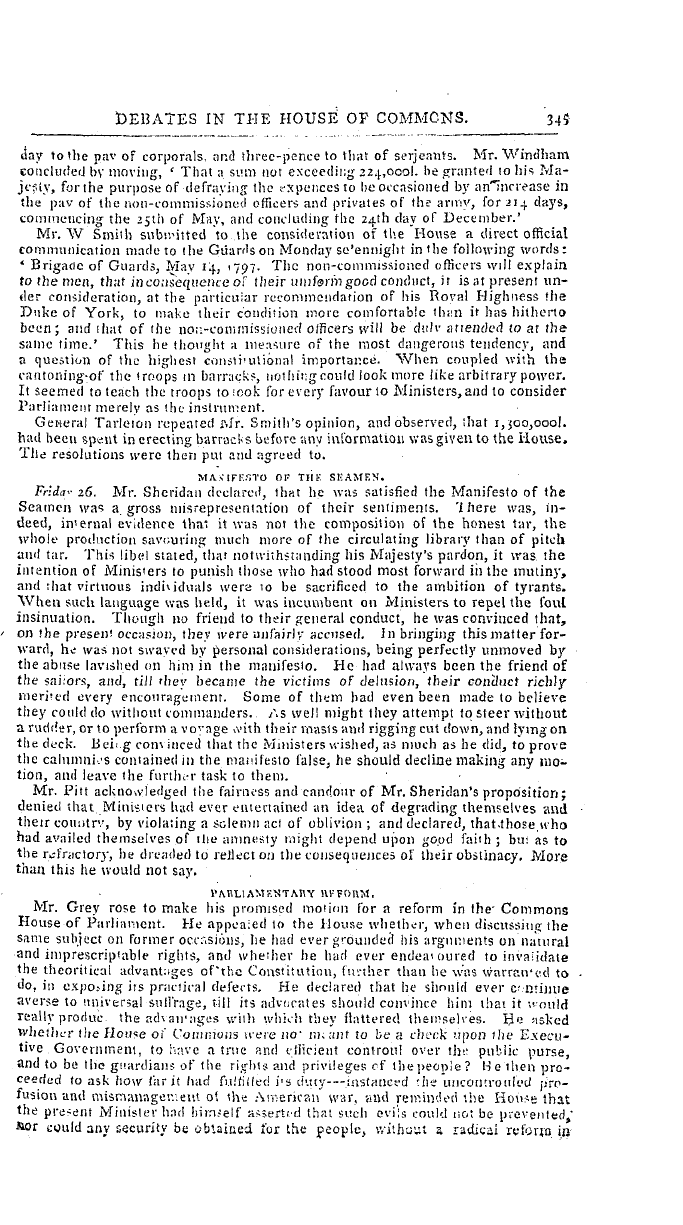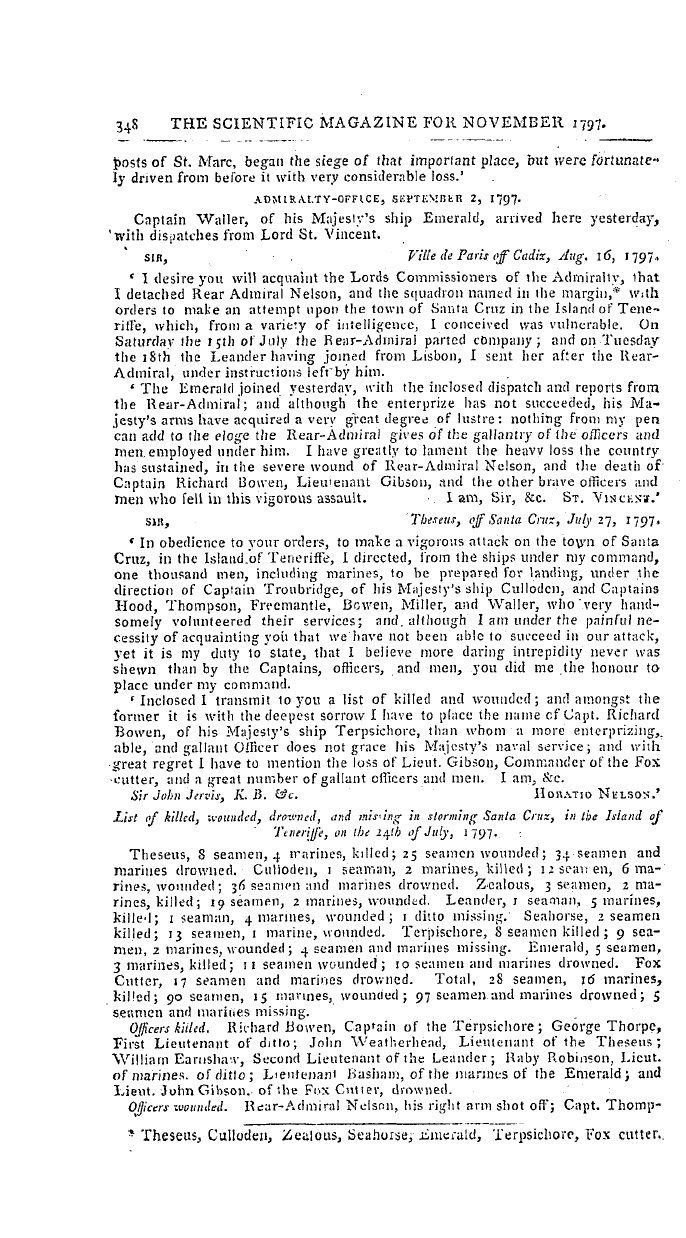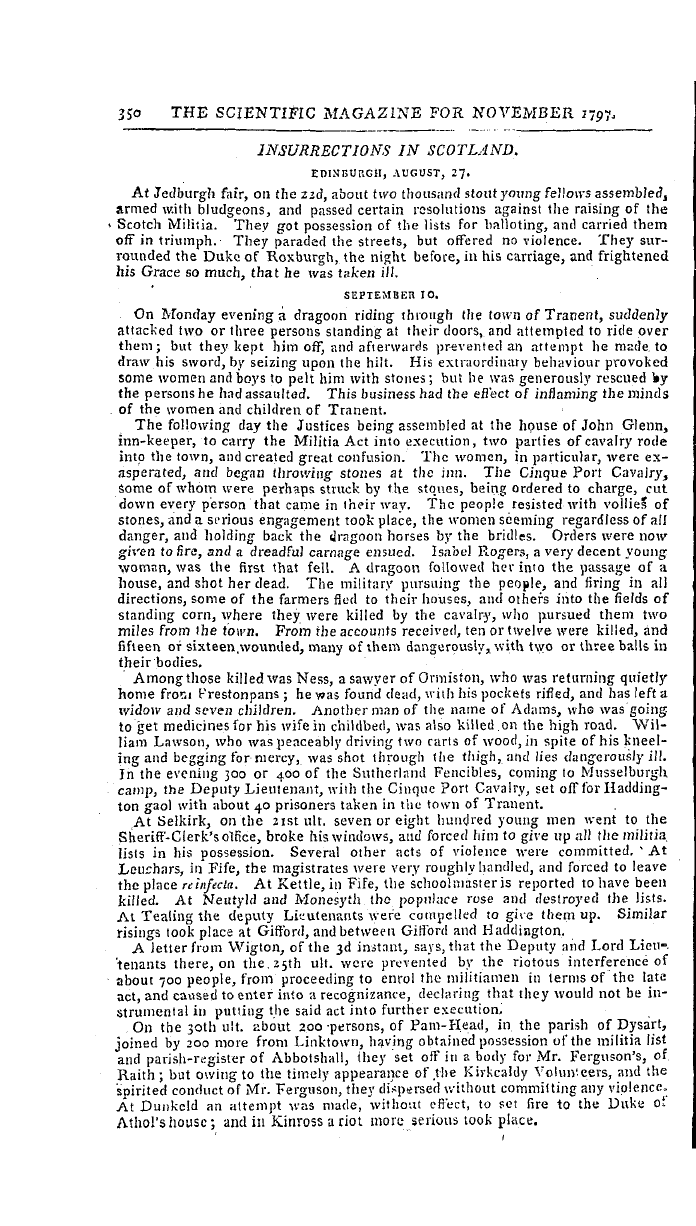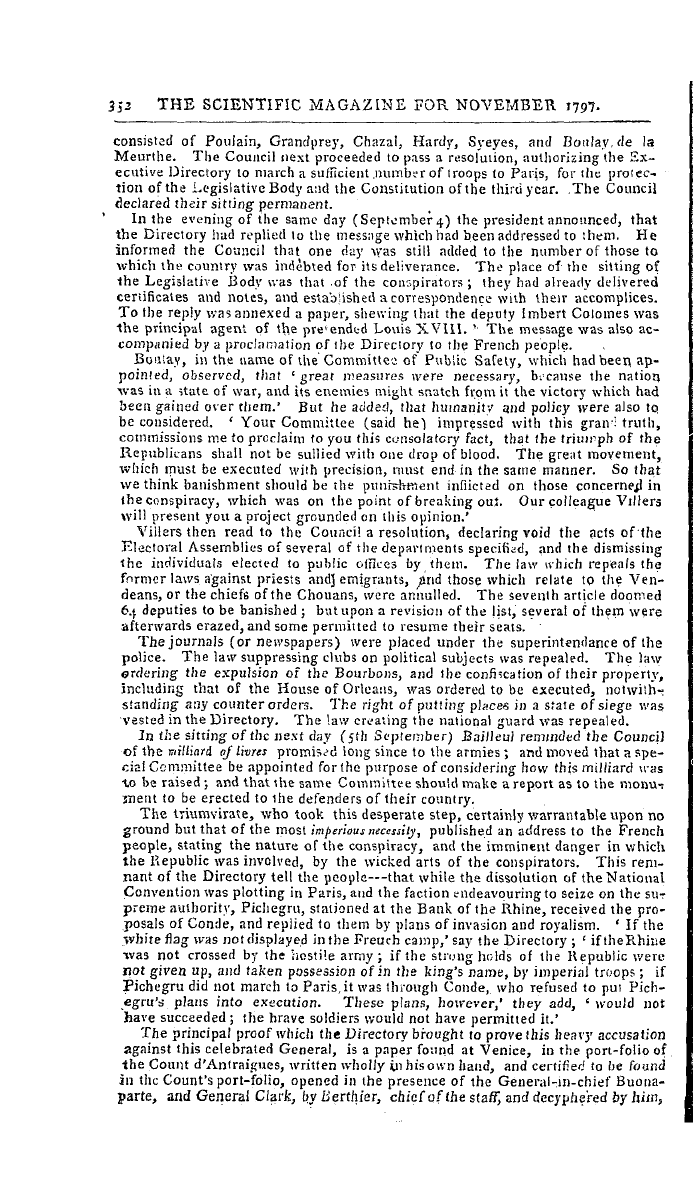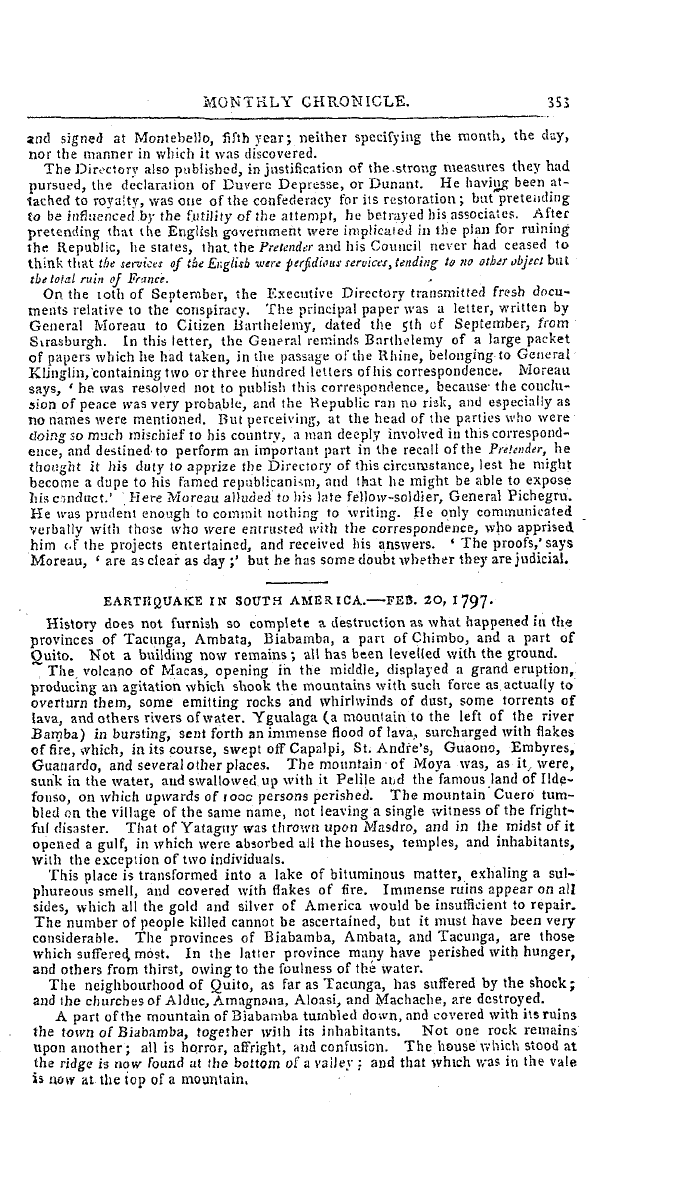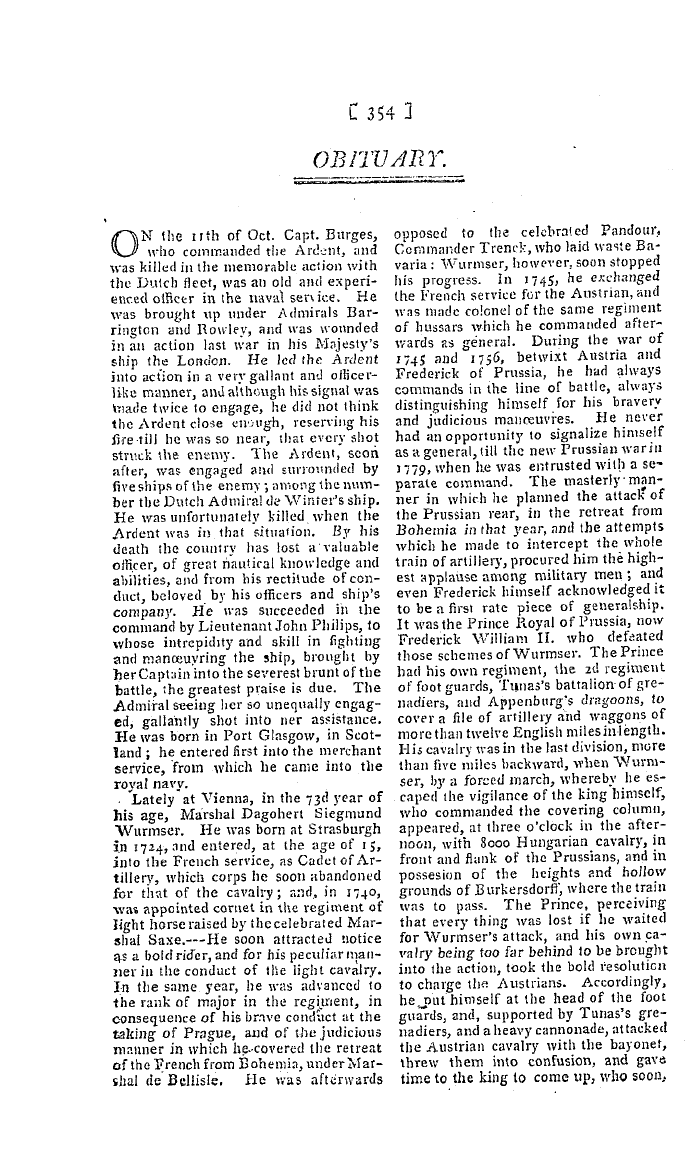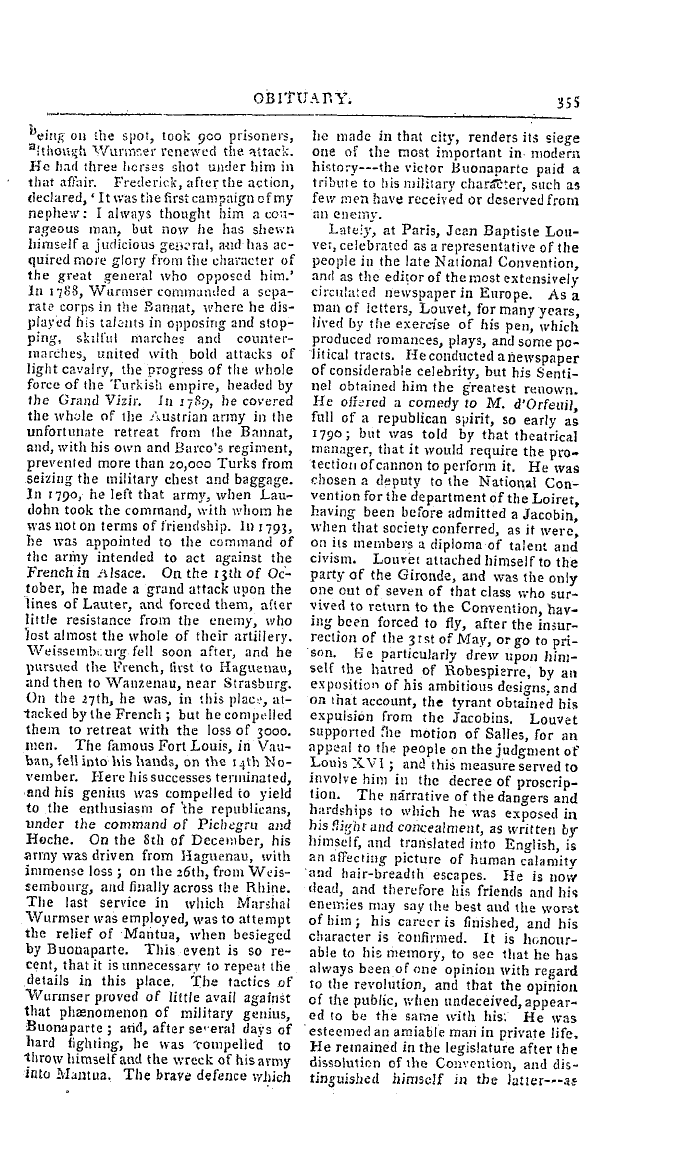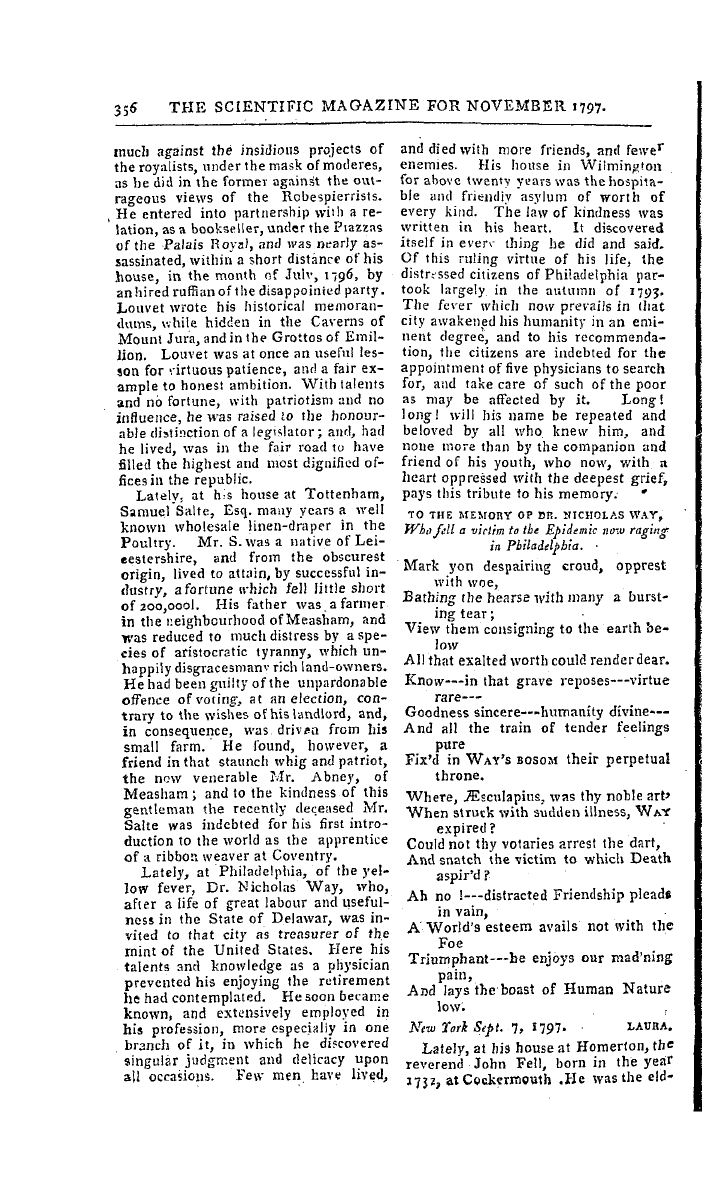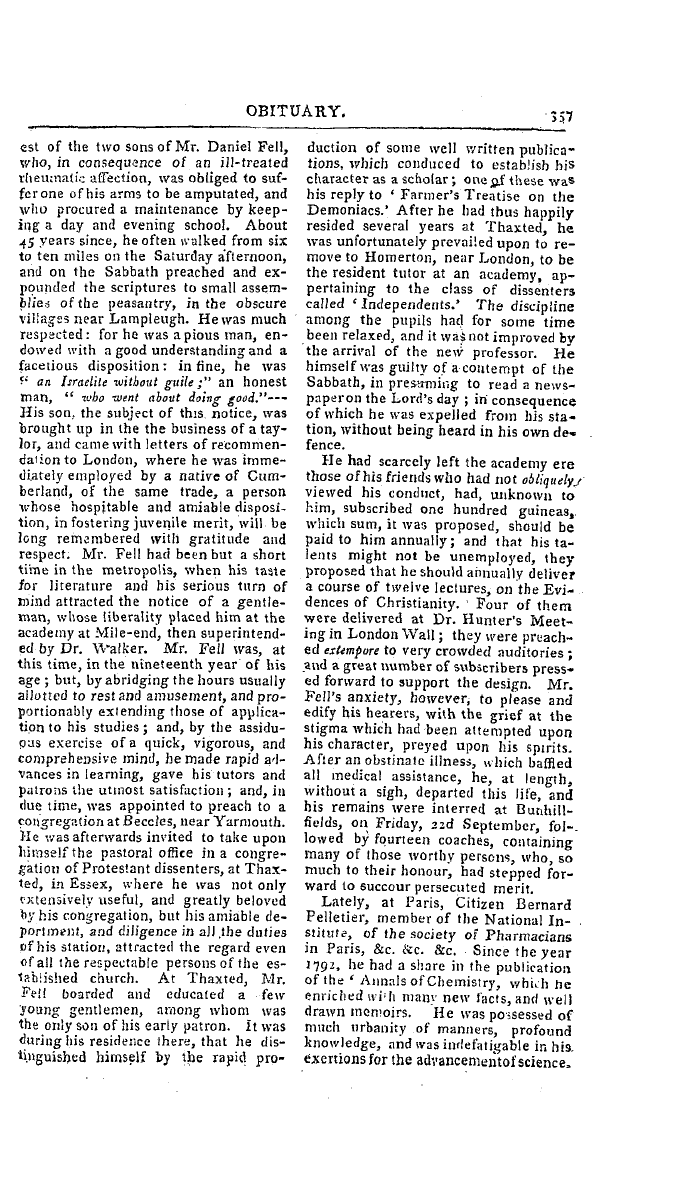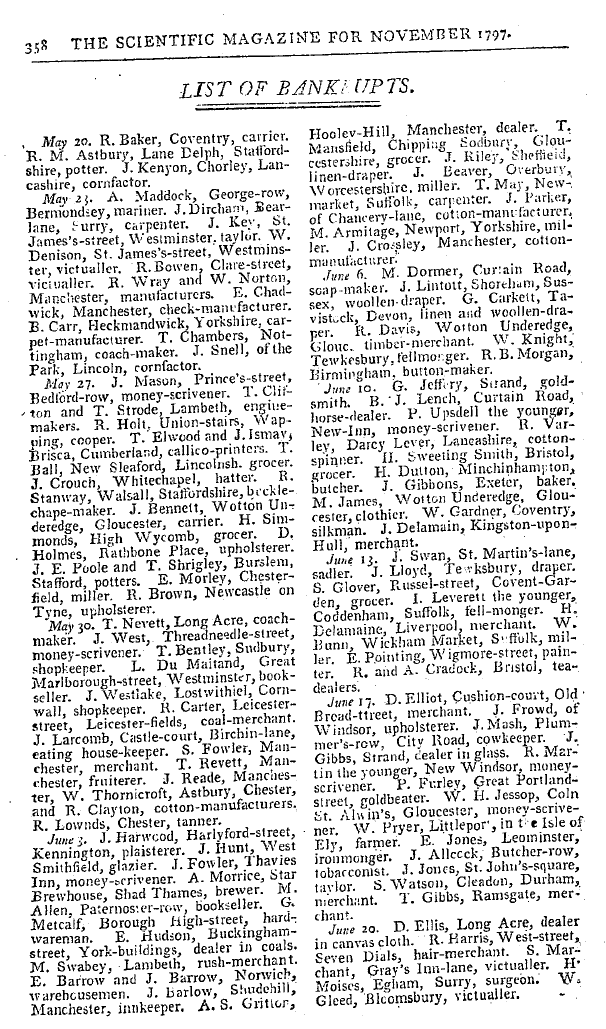-
Articles/Ads
Article HISTORY OF THE SCIENCES FOR 1797. Page 1 of 3 →
Note: This text has been automatically extracted via Optical Character Recognition (OCR) software.
History Of The Sciences For 1797.
HISTORY OF THE SCIENCES FOR 1797 .
THEORY OF COMETS . [ CONCLUDED FROM OUB LAST . ]
THUS he accounts for trees and hones being found at a very great depth in Ihe earth . He also held , that before the fall , the earth revolved round the sun in the plane ofthe ecliptic , keeping always the same points of its surface towards the same fixed stars . By this means , as every meridian would come to the . sun but once in every revolution , a day and a year were then the same , but that a cometstriking obliquel ' on some part of tiie earth , gave it tlie
, y diurnal rotation : that- the antediluvian year consisted of 3 60 days ; but that the additional matter deposited upon the earth from the atmosphere of the comet at the flood , so retracted the revolution thereof round the sun , that it is not now performed in less than 365 days and about a quarter . The same comet he thought would probably , coming near the earth when heated in an immense degree
in its perihelion , be the instrumental cause of the general conflagration . As to the nature of comets , various conjectures have beenformed , and nothing certain can be concluded . Hevelius , in order to account for the various appearances ofthe nucleus , supposed that they were composed of several masses compacted together , with a transparent fluid interspersed ; but the apparent changes may be only on the surface : comets may be subject to spots as the planets are ; and the vastly different degrees of heat they go through may occasion
great and sudden changes even in their internal frame and texture . Newton places all these changes in the atmosphere that surrounds them ; which must be very dense near the surface , and have clouds floating therein . He was of opinion , that the changes may be wholly in the clouds , and not in the nucleus . This last he considered as a body of extreme solidity , in order to sustain such an immense heat as the comets sometimes endure ; and that
notwithstanding their flying out into such a vast extent of space , they would hardly be cool again on their return to the sun . According to his calculation , that . of 1680 must be for ever in a state of ignition . He hath computed , that a g lobe of red hot iron , of the dimensions ofthe earth , would not . be 'cool in 50 , 000 years . If then the comet be supposed to cool one hundred times faster than red hot iron , as
its heat was two thousand times greater , it must require more than a million of years to cool it . ¦ In the short period of 575 years , therefore , its heat can hardly be diminished ; and consequently in every revolution it must acquire an increase of heat ; so that since the creation , having received a proportional addition in every succeeding revolution , it must now be in a state of ignition very little inferior to that of the sun itself , VOL . is , 8 q
Note: This text has been automatically extracted via Optical Character Recognition (OCR) software.
History Of The Sciences For 1797.
HISTORY OF THE SCIENCES FOR 1797 .
THEORY OF COMETS . [ CONCLUDED FROM OUB LAST . ]
THUS he accounts for trees and hones being found at a very great depth in Ihe earth . He also held , that before the fall , the earth revolved round the sun in the plane ofthe ecliptic , keeping always the same points of its surface towards the same fixed stars . By this means , as every meridian would come to the . sun but once in every revolution , a day and a year were then the same , but that a cometstriking obliquel ' on some part of tiie earth , gave it tlie
, y diurnal rotation : that- the antediluvian year consisted of 3 60 days ; but that the additional matter deposited upon the earth from the atmosphere of the comet at the flood , so retracted the revolution thereof round the sun , that it is not now performed in less than 365 days and about a quarter . The same comet he thought would probably , coming near the earth when heated in an immense degree
in its perihelion , be the instrumental cause of the general conflagration . As to the nature of comets , various conjectures have beenformed , and nothing certain can be concluded . Hevelius , in order to account for the various appearances ofthe nucleus , supposed that they were composed of several masses compacted together , with a transparent fluid interspersed ; but the apparent changes may be only on the surface : comets may be subject to spots as the planets are ; and the vastly different degrees of heat they go through may occasion
great and sudden changes even in their internal frame and texture . Newton places all these changes in the atmosphere that surrounds them ; which must be very dense near the surface , and have clouds floating therein . He was of opinion , that the changes may be wholly in the clouds , and not in the nucleus . This last he considered as a body of extreme solidity , in order to sustain such an immense heat as the comets sometimes endure ; and that
notwithstanding their flying out into such a vast extent of space , they would hardly be cool again on their return to the sun . According to his calculation , that . of 1680 must be for ever in a state of ignition . He hath computed , that a g lobe of red hot iron , of the dimensions ofthe earth , would not . be 'cool in 50 , 000 years . If then the comet be supposed to cool one hundred times faster than red hot iron , as
its heat was two thousand times greater , it must require more than a million of years to cool it . ¦ In the short period of 575 years , therefore , its heat can hardly be diminished ; and consequently in every revolution it must acquire an increase of heat ; so that since the creation , having received a proportional addition in every succeeding revolution , it must now be in a state of ignition very little inferior to that of the sun itself , VOL . is , 8 q




























































